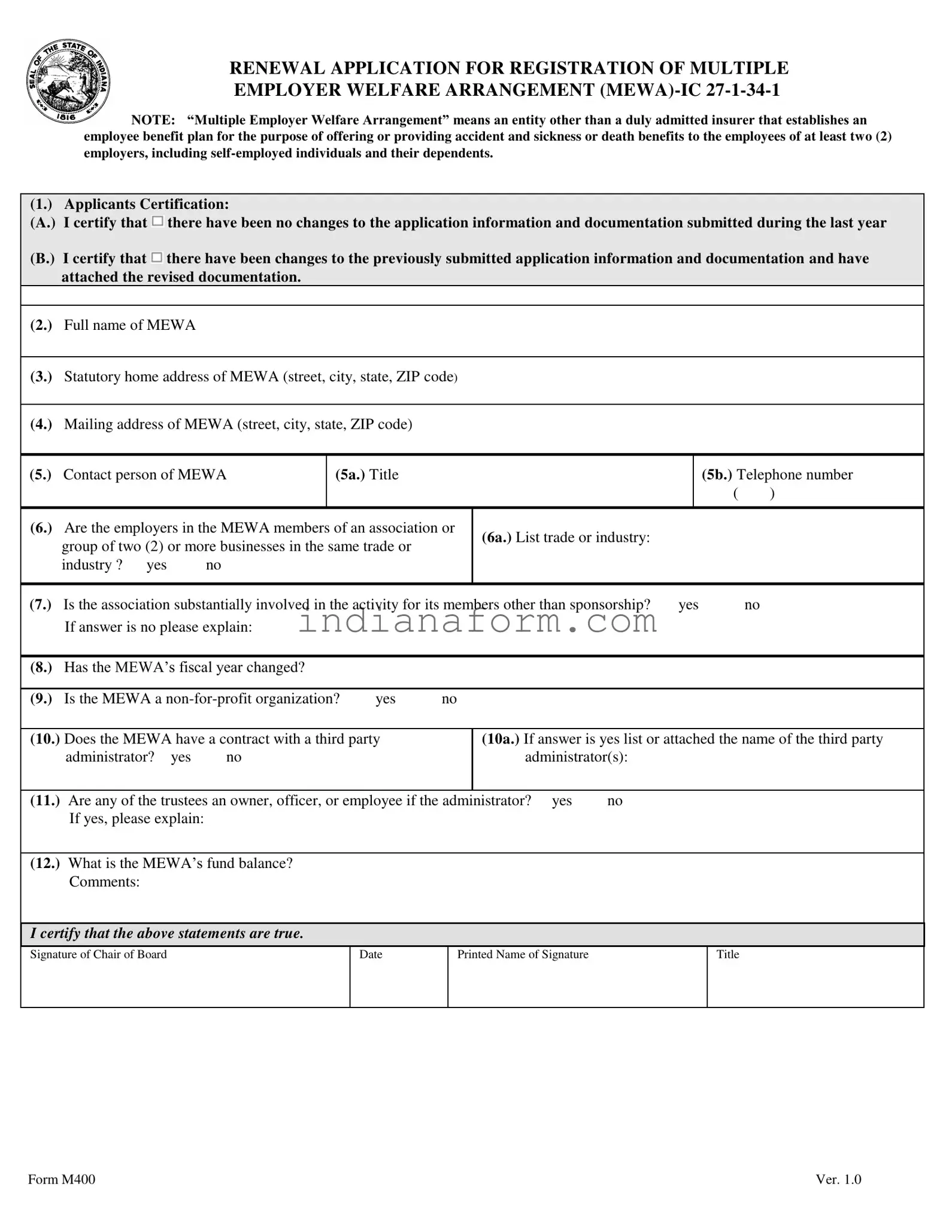What is the purpose of the Indiana M400 form?
The Indiana M400 form is a renewal application designed for registration of Multiple Employer Welfare Arrangements (MEWAs) in Indiana. MEWAs provide a structure through which employers, including those who are self-employed, can offer their employees and dependents benefits covering accident, sickness, or death. The primary purpose of the M400 form is to ensure MEWAs continue to meet regulatory requirements established under Indiana Code 27-1-34-1, updating the state on any changes in their operation, structure, or financial health.
Who needs to file the Indiana M400 form?
This form must be filed by MEWAs operating in Indiana that wish to renew their registration to continue offering or providing accident and sickness or death benefits. It applies to entities that serve the employees and dependents of at least two different employers, including those who are self-employed.
When should the Indiana M400 form be submitted?
While the exact due date may vary, the Indiana M400 form should be submitted in accordance with the renewal schedule set forth by the Indiana Department of Insurance. MEWAs should refer to their initial registration documents or contact the department directly to confirm their specific renewal deadline to ensure continuous compliance and operation without interruption.
What are the key sections of the Indiana M400 form?
Key sections of the M400 form include the applicant's certification about updates (or lack thereof) to previously submitted information, full name and address details of the MEWA, contact information of a responsible individual, details regarding membership in an association, fiscal year information, nonprofit status, details on third-party administrator contracts, and trustee affiliations. Each of these sections is crucial for accurately assessing the current state and operational compliance of the MEWA.
What happens if information has changed since the last application?
If there have been any changes to the application information or documentation since the last submission, it is essential to certify this on the form and attach the revised documentation. This ensures that the Indiana Department of Insurance has the most current information about the MEWA's operations, structure, and financial health, facilitating accurate and effective regulatory oversight.
What does it mean if the MEWA is associated with an industry or trade group?
If MEWA employers are members of an association or group within the same trade or industry, it indicates a collective effort to provide benefits to their employees through shared resources and risk. These associations must be substantially involved in activities beyond merely sponsoring the MEWA, including possibly providing additional support or services to member employers. This can influence the oversight and regulatory requirements of the MEWA.
How is the information submitted with the M400 form used by the Indiana Department of Insurance?
The information provided on the M400 form allows the Indiana Department of Insurance to assess the compliance of the MEWA with state laws and regulations. It is used to evaluate the MEWA’s operational integrity, financial stability, and commitment to providing benefits to its members’ employees and dependents. This oversight helps protect the interests of all parties involved and ensures the provision of adequate health and death benefits.

